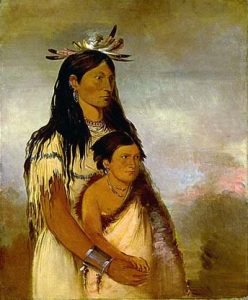Cheraw Tribe
Cheraw Indians. An important tribe, very probably of Siouan stock, formerly ranging in central Carolina, east of the Blue ridge, from about the present Danville, Va., southward to the neighborhood of Cheraw, S. C., which takes its name from them. In numbers they may have stood next to the Tuscarora among the North Carolina tribes, but are less prominent in history by reason of their almost complete destruction before the white settlements had reached their territory. They are mentioned first in the De Soto narrative for 1540, under the name Xuala, a corruption of Suali, the name by which they … Read more


